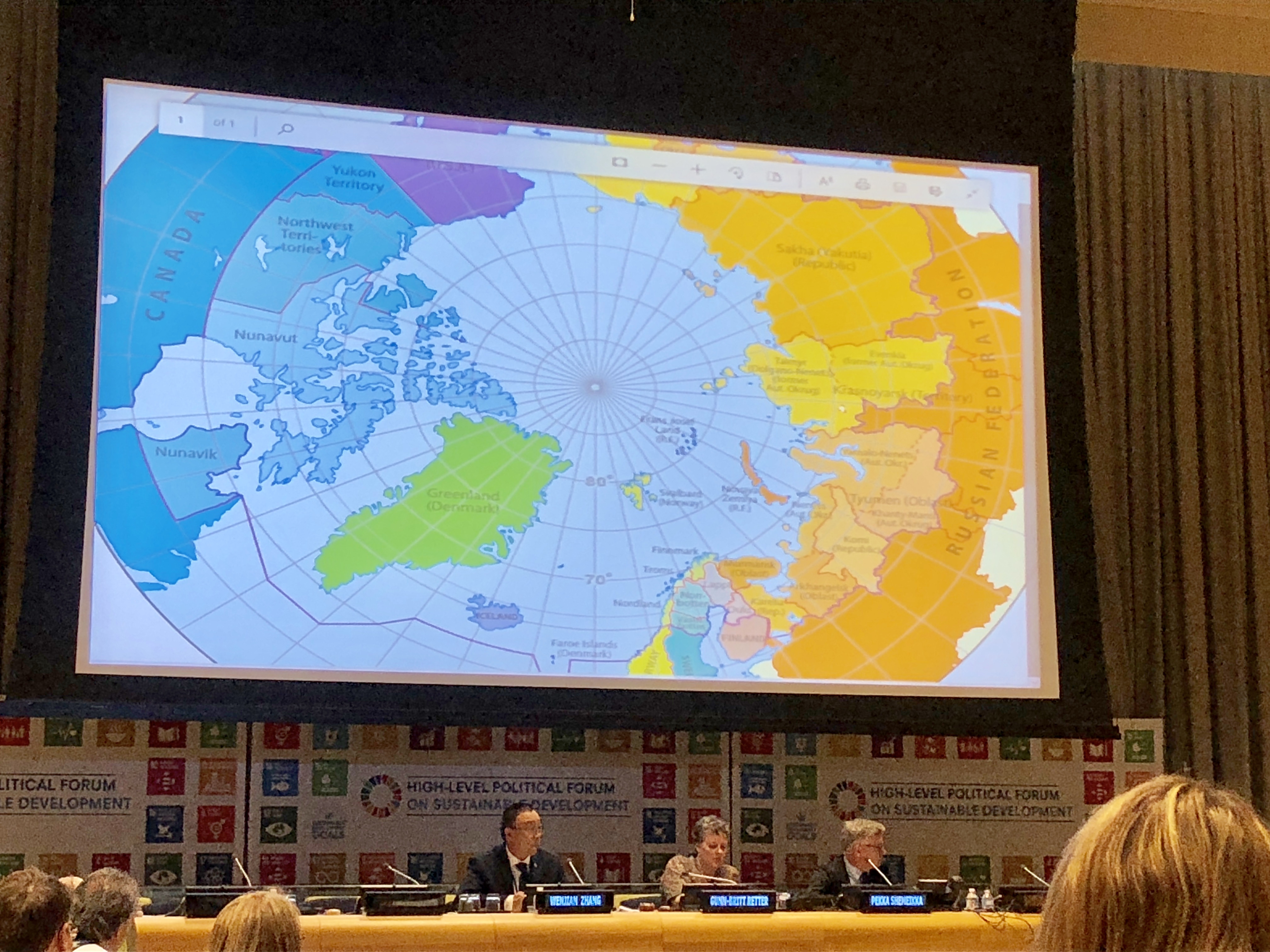Arctic Council sells itself as a model for international cooperation at the UN
“I don’t think the Arctic Council can provide miracles, yet hopefully inspirations.”

For the first time since its formation in 1996, the Arctic Council presented its work at the UN’s annual High-level Political Forum on Sustainable Development, held last week in New York, setting itself as a global example of how states, indigenous peoples and the scientific community can work together to shape policies.
Pekka Shemeikka, chair of the Arctic Council’s Sustainable Development Working Group said that the challenge for sustainable development is basically very much the same in the Arctic and elsewhere in the world, which is to secure economic development and ensure environmental and social resilience at the same time.
“I don’t think the Arctic Council can provide miracles, yet hopefully inspirations,” Shemeikka said.
Despite being geographically distant from much of the rest of the world, the Arctic is quickly becoming a globalized region thanks to global warming, as receding sea ice in the Arctic Ocean allows for increased commercial shipping, oil and gas drilling, and other economic and political opportunities.
Representatives from Canada, Russia, Finland, and non-Arctic nations such as Singapore, reiterated the interconnectivity of the Arctic with the rest of the world, while showcasing the work of the council’s six working groups through the form of two panels.
Questions were raised as to how the council prepares to maintain this unique northern spirit with an influx of new comers and non-Arctic stake holders beginning to invest in Arctic affairs.
Mike Sfraga, moderator of the event and director of Wilson Center’s Polar Initiative said that “there seems to be a very good spirit with the observer countries and we see that now spreading out to other levels of cooperation.”
The Arctic Council is made up of eight member states, six indigenous permanent participant organizations, and 39 observer nations.